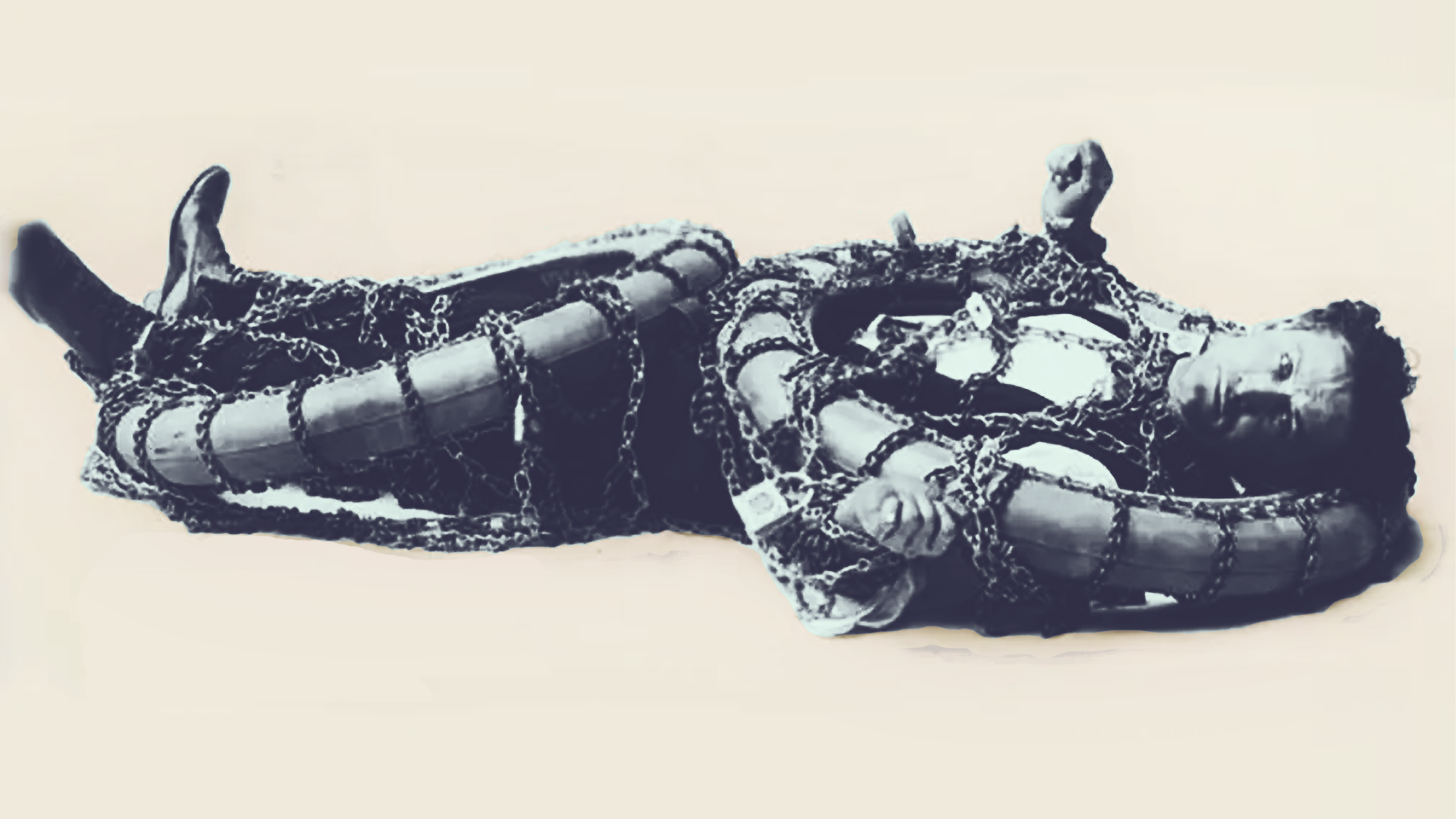Harry Houdini

Harry Houdini performing an escape stunt
Biography
Before he was Harry Houdini, he was Ehrich Weisz, a Hungarian immigrant kid from Wisconsin with big dreams, calloused hands, and something to prove. His father was a struggling rabbi, and young Ehrich grew up watching his parents fight to survive in a country that didn’t make it easy. But even as a kid, he had a knack for spectacle. By age nine, he was performing trapeze acts as 'The Prince of the Air' and picking up pins with his eyelashes for a whopping 35 cents.
In the late 1890s, Houdini was broke, discouraged, and nearly ready to give it all up. But then a vaudeville tycoon saw his handcuff escape act and sent him on tour. Game. Changed. Europe went wild for the guy who could escape anything. Newspapers called him 'The King of Handcuffs' and 'The Celebrated Police Baffler.' What Houdini was really doing, though, was reinventing performance itself.
But the magic didn’t stop on stage. Houdini flew planes, performed underwater escapes in San Francisco Bay, and even acted in silent films. He wasn’t just an entertainer, he was a daredevil, a stuntman, a tech nerd, and a master of self-promotion. Behind the curtain, he shared escape techniques with American soldiers during World War I, helping them learn how to survive if captured or trapped. And he never stopped pushing boundaries. Even after death. Literally. Houdini and his wife Bess promised each other they'd try to contact one another from beyond the grave. (Spoiler: no confirmed ghost texts yet.)
Houdini also made it his mission to expose frauds. After his mother died, he explored spiritualism but quickly realized that many 'mediums' were just con artists in costume. He clashed publicly and bitterly with his former friend, Sir Arthur Conan Doyle, over this. Houdini didn’t believe in using grief as a trick. He exposed fake séances and phony spirit photography, publishing brutal takedowns and even inventing tools to catch cheats in the act. For a guy whose entire career was built on illusion, Houdini had zero tolerance for deception that preyed on the vulnerable.
Houdini died on Halloween in 1926 after complications from a burst appendix, just days after taking a punch to the stomach he wasn’t prepared for. He was only 52. But don’t let the early exit fool you, Harry Houdini packed enough life into five decades to fill five lifetimes. His escapes thrilled millions, his films and writings inspired generations, and his fierce defense of truth still echoes. He was more than a magician. He was a myth-maker, a boundary-breaker, and a master of the impossible.
Houdini wasn’t just about escaping from chains—he was about breaking free from limitations. He transformed magic into spectacle, challenged the supernatural, and pushed the boundaries of human endurance. Whether defying death in a water torture cell or exposing con artists who preyed on grief, Houdini’s legacy is one of skepticism, perseverance, and showmanship. He showed us that real magic isn’t about tricks—it’s about what happens when preparation meets belief in the impossible.
?
Why do you think Houdini’s escapes fascinated people so much?
What can we learn from Houdini about resilience and reinvention?
How did Houdini use the media to build his legend?
Why did Houdini dedicate so much of his later life to debunking Spiritualism?
Do you think Houdini’s tricks would still be as exciting today? Why or why not?
If Houdini were alive today, what kinds of stunts do you think he’d attempt?
How did Houdini's immigrant background shape his drive for success?
Dig Deeper
Is there something supernatural about Houdini's extraordinary magic abilities?
Discover more

Claudette Colvin
Claudette Colvin’s bold defiance of unjust Jim Crow laws came nine months before Rosa Parks’ more widely known protest and was a crucial spark in the fight to end bus segregation.

The Wright Brothers
In 1903, Wilbur and Orville Wright defied gravity and doubt by launching the first successful powered, controlled flight.

Joan of Arc
Joan of Arc led French forces to victory at Orléans during the Hundred Years’ War, breaking the siege and paving the way for Charles VII’s coronation.
Further Reading
Stay curious!
